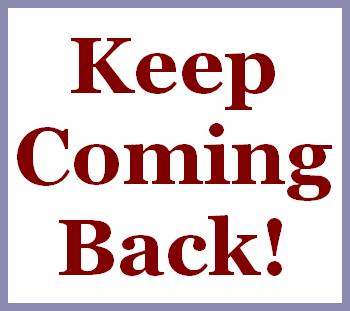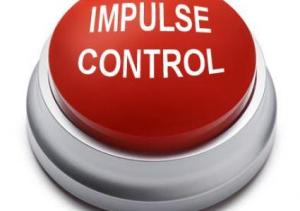So keep taking the medicine…
“A 16-Year Follow-Up of Initially Untreated Individuals
Abstract
This study focused on the duration of participation in professional treatment and Alcoholics Anonymous (AA) for previously untreated individuals with alcohol use disorders. These individuals were surveyed at baseline and 1 year, 3 years, 8 years, and 16 years later. Compared with individuals who remained untreated, individuals who obtained 27 weeks or more of treatment in the first year after seeking help had better 16-year alcohol-related outcomes. Similarly, individuals who participated in AA for 27 weeks or more had better 16-year outcomes. Subsequent AA involvement was also associated with better 16-year outcome…some of the association between treatment and long-term alcohol-related outcomes appears to be due to participation in AA.
We focus here on participation in professional treatment and AA among previously untreated individuals after these individuals initially sought help for their alcohol use disorders and address three sets of questions:
-
Is the duration of treatment obtained in the first year after seeking help, and the duration of subsequent treatment, associated with individuals’ long-term (16-year) alcohol-related and psychosocial outcomes? Is participation in treatment in the second and third years … after initiating help seeking associated with additional benefits beyond those obtained from participation in the first year?
-
Is the duration of participation in AA in the first year, and the duration of subsequent participation, associated with individuals’ long-term (16-year) outcomes? Is participation in AA in the second and third years associated with additional benefits beyond those obtained from participation in the first year?
-
Many of the individuals who participate in one modality of help (professional treatment or AA) also participate in the other modality. Accordingly, we focus on whether the associations between the duration of participation in treatment and AA and 16-year outcomes are independent of participation in the other modality of help. We also consider interactions between the duration of treatment and AA in that, for example, one modality could compensate for or amplify the influence of the other.
Independent Contribution of Treatment and Alcoholics Anonymous
Patients who participate in both self-help groups and treatment tend to have better outcomes than do patients who are involved only in treatment (Fiorentine, 1999;Fiorentine & Hillhouse, 2000). According to Moos et al. (2001), patients with substance use disorders who attended more self-help group meetings had better 1-year outcomes.
Similarly, among patients discharged from intensive substance use care, participation in self-help groups was associated with better 1-year (Ouimette et al., 1998), 2-year, and 5-year (Ritsher, Moos, & Finney, 2002; Ritsher, McKellar, et al., 2002) outcomes, after controlling for outpatient mental health care. We focus here on whether the duration of participation in one modality of help (treatment or AA) contributes to long-term outcomes beyond the contribution of participation in the other modality.
Prior Findings With This Sample
In prior work with the current sample, we found that individuals who entered treatment or AA in the first year after seeking help had better alcohol-related outcomes and were more likely to be remitted (in recovery) than were individuals who did not obtain any help. Individuals who participated in treatment and/or in AA for a longer interval in the first year were more likely to be abstinent and had fewer drinking problems at 1-year and 8-year follow-ups (Moos & Moos, 2003; 2004a; 2005b; Timko, Moos, Finney, & Lesar, 2000).
In this article, the distinctive focus is on associations between the duration of participation in treatment and AA and 16-year outcomes. We also consider the independent contribution of participation in treatment and AA to 16-year outcomes.
Discussion
Compared to individuals who did not enter treatment in the first year after they sought help, individuals who obtained treatment for 27 weeks or more experienced better 16-year alcohol-related outcomes. Individuals who participated in AA for 27 weeks or more in the first year, and in years 2 and 3, had better 16-year outcomes than did individuals who did not participate in AA. Some of the contribution of treatment reflected participation in AA, whereas the contribution of AA was essentially independent of the contribution of treatment.
Participation in Treatment and 16-Year Outcomes
About 60% of individuals who sought help for their alcohol use problems entered professional treatment within one year. These individuals obtained an average of 20 weeks of treatment. Compared to untreated individuals, individuals who obtained 27 weeks or more of treatment in the first year were more likely to be abstinent and less likely to have drinking problems at 16 years than were individuals who remained untreated. These findings extend earlier results on this sample (Moos & Moos, 2003; 2005b; Timko et al., 1999) and are consistent with prior studies that have shown an association between more-extended treatment and better substance use outcomes (Moos et al., 2000, 2001;Ouimette et al., 1998).
Participation in Alcoholics Anonymous and 16-Year Outcomes
The findings extend earlier results on this sample (Moos & Moos, 2004a; 2005b) and those of prior studies (Connors et al., 2001; Fiorentine, 1999; Ouimette et al., 1998;Watson et al., 1997) by showing that more extended participation in AA is associated with better alcohol-related and self-efficacy outcomes. The results support the benefit of extended engagement in AA, in that a longer duration of participation in the first year, and in the second and third years, was independently associated with better 16-year outcomes. In addition, our findings indicate that attendance for more than 52 weeks in a 5-year interval may be associated with a higher likelihood of abstinence than attendance of up to 52 weeks.
Part of the association between AA attendance and better social functioning, which reflects the composition of the social network, is likely a direct function of participation in AA. In fact, for some individuals, involvement with a circle of abstinent friends may reflect a turning point that enables them to address their problems, build their coping skills, and establish more supportive social resources (Humphreys, 2004; Humphreys, Mankowski, Moos, & Finney, 1999). Participation in a mutual support group may enhance and amplify these changes in life context and coping to promote better long-term outcomes.
Independent Contribution of Treatment and Alcoholics Anonymous
Consistent with prior studies (Fiorentine, 1999; Fiorentine & Hillhouse, 2000; Moos et al., 2001; Ritsher, McKellar, et al., 2002; Ritsher, Moos, & Finney, 2002), longer participation in AA made a positive contribution to alcohol-related, self-efficacy, and social functioning outcomes, over and above the contribution of treatment.
An initial episode of professional treatment may have a beneficial influence on alcohol-related functioning; however, continued participation in a community-based self-help program, such as AA, appears to be a more important determinant of long-term outcomes.
Moreover, compared with individuals who participated only in treatment in the first year, individuals who participated in both treatment and AA were more likely to achieve 16-year remission (i.e. still be in recovery) (Moos & Moos, 2005a).
In interpreting these findings, it is important to remember that participation in treatment likely motivated some individuals to enter AA; thus, some of the contribution of AA to 16-year outcomes should be credited to treatment. Another consideration involves the differential selection processes into treatment versus AA. Individuals with more severe alcohol-related problems tend to obtain longer episodes of treatment, but this selection and allocation process is much less evident for AA.
These divergent selection processes may help to explain the finding that AA is more strongly associated with positive long-term outcomes than is treatment.”
…keep making the meetings!
References
Moos, R. H., & Moos, B. S. (2006). Participation in Treatment and Alcoholics Anonymous: A 16-Year Follow-Up of Initially Untreated Individuals. Journal of Clinical Psychology, 62(6), 735–750. doi:10.1002/jclp.20259








